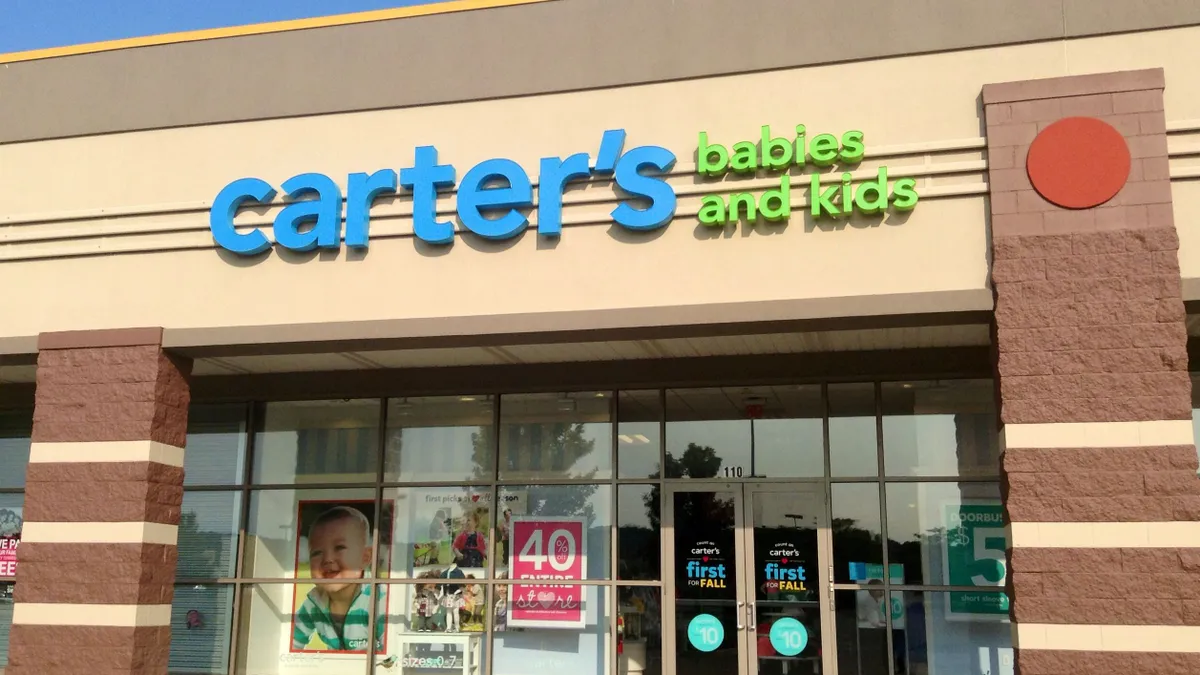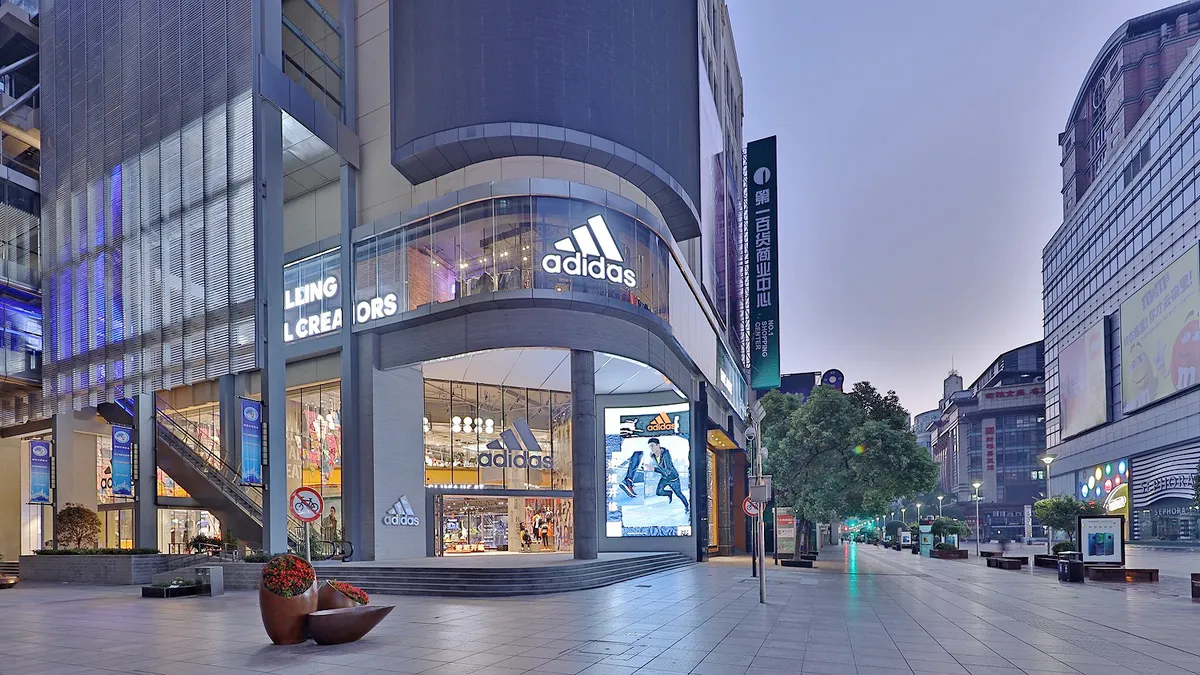"The Force Awakens" Star Wars chapter lived up to expectations this holiday season, busting through box office records set even by "Titanic." But there are other forces, from the strong dollar to unseasonable weather, that retailers will have to contend with this year that are hardly so exciting.
Unfortunately, most companies will be buffetted by more than one, if not all, of these forces at once. Macy's, for one, cited many of these issues in their post-holiday report, which is prompting them to close stores and scale back expectations.
The victors shall be the retailers who take the steps necessary to stay in control.
1. The strong dollar
The strong dollar is increasingly appearing in retailers’ earning reports as a factor pulling down their bottom lines, and there’s no end in sight right now. A strong dollar means that, in particular, U.S. retailers with a large presence abroad or that cater to foreign tourists here will take a hit as their goods become more expensive.
A muscle-bound dollar keeps tourists away from U.S. shores—and U.S. retailers—or at least cut down on their spending. It doesn’t help that Europeans are also dealing with a struggling economy that is hurting their employment picture and the value of the euro.
And overall, the strong-and-getting-stronger dollar is a bit too much for the economy as a whole, dragging down growth.
“It takes a while for the dollar to work its way through the economy, but it’s weighing on manufacturing,” Michael Gapen, Barclays chief U.S. economist, told the New York Times in October. “Some Fed policy makers are definitely looking at this, and they know that trade will be a big drag on growth. It’s very clear that the dollar’s strength is showing up in the numbers.”
All this adds to the not-quite-there feeling that consumers have about the American recovery. As with the wage gap, consumers have a reason to hesitate as employment growth remains muted and companies report weaker than expected earnings.
2. Weather
Warm temps and a dearth of snow hit many retailers hard during the holiday shopping season. Because of the El Niño-pattern induced warm weather, apparel retailers (not even including department stores) lost $421 million in sales due to weather between Nov. 1 and Dec. 19, and that rose to more than $500 million through Dec. 26, according to weather-strategy company Planalytics.
Yet, in the new year, more seasonably cold temps and snow are coming too late for many specialty apparel retailers to recoup their resulting losses, Planalytics says.
And spring is hardly expected to bring relief. While the boots are piled up (or sold at thin margins), an expected cool spring, also due to El Niño, will exacerbate weather-related sales problems, especially for apparel retailers, as shoppers see no reason to shed the sweaters they did buy (on sale).
That likely will cause them to make more conservative plans for fall, analysts say.
While retailers have been hit with slow traffic due to major weather events in the past, basing inventory plans on year to year patterns is no longer sufficient, in part due to the climate effects of global warning, which makes prediction a more volatile enterprise. Retailers would be wise to keep an eye on week-to-week weather patterns, according to Planalytics. While snowstorms famously keep shoppers away from stores, it’s not really those major events that matter when it comes to retail logistics, the company notes in its report, “Weatherizing a Retail Business.”
“Last November, [retailers] came close to or ran out of outerwear early. It was such a panic. So this year, no matter what the data tells them, they plan up from last year,” Planalytics president Scott A. Bernhardt told the New York Times. “They get stuck in the past a little bit.”
3. Inventory
Inventory was a problem thanks to the long, drawn out labor negotiations at West Coast ports in 2014, and inventory problems are continuing thanks to weather patterns (see above). Several retailers, especially in apparel, are reporting higher-than-ideal inventory levels that are forcing discounts and dinging the bottom line.
And while returns are contributing to the problem, especially just after the holidays, liberal return policies can be a good way for retailers to maintain loyalty. Depending on the return or the level of returns, it could be an acceptable expense. In any case, the ratio of inventory to sales has risen to the highest levels in five years, according to the Wall Street Journal.
Many analysts expect the issue to be resolved, at least at certain retailers, as companies work their way through stockpiles, whether they were caused by port delays, weather misses, or poor management.
But inventory challenges are also exacerbated by retailers boosting their omnichannel efforts, where stores become mini-warehouses and when shoppers expect to see availability of products whether they’re in the store, at their computers, or on their phones. Orders placed online, a growing phenomenon (e-commerce sales were up 20% this holiday season, by some measures) are making things more difficult even in an era when online orders can contribute more customer data.
One of the problems may be that for many retailers, all that data is compartmentalized into silos, making the information less useful than it could be in inventory management.
For at least one retailer, Target Corp., though, expanded inventory is the result of careful planning. Target Corp. says that its own higher inventory are the result of efforts to better manage its in-stock levels, including safety stock of key items.
4. Higher wages
The new year saw 14 states implement higher minimum wages through legislative action or automatic cost-of-living increases. And the issue’s hardly going away. This year, several more states and cities, including California and New York, will consider bills that would eventually boost hourly pay even further to $15.
Many retail and retail business organizations are fighting against such proposals because they say they raise the costs, ultimately, to their customers. And, as Wal-Mart has found, their investors: When Wal-Mart CFO Charles Holley said late last year that costs related to wages and training alone would ding operating profits by some $1.5 billion in fiscal 2017, the retailer witnessed one of its biggest one-day declines. Retailers like Wal-Mart that have consistently paid well below the new minimums (whether dictated by legislation or by a more booming economy's prevailing wage) will feel the hit more acutely than those that already pay at or above those minimums.
But retailers in particular see benefits from this movement too.
On the business side, retailers that pay better — notably among them Costco —treat the expense as a strategic one.
“They have high productivity, great customer service, healthy growth, and excellent returns to their investors,” Massachusetts Institute of Technology researcher and retail expert Zeynep Ton wrote in Forbes. “They compete head-on with companies that spend far less on their employees, and they win.”
But there’s also a benefit one the consumer side that can boost retailers. The increasing wages and salaries of last year helped widen shoppers’ wallets, and lower gas prices finally started making a difference too. That’s leading to consumer optimism not seen in years, according to a report this summer from Cushman & Wakefield, “The Consumer is Back to Pulling His Weight.”
“The consumer is pretty much chugging along,” Jefferies LLC economist Tom Simons told Bloomberg in July, which saw a spending bump attributable to a wage boost. “It’s clearly encouraging to see the wage gain. We definitely need more of that to see a sustained acceleration in consumption.”




















